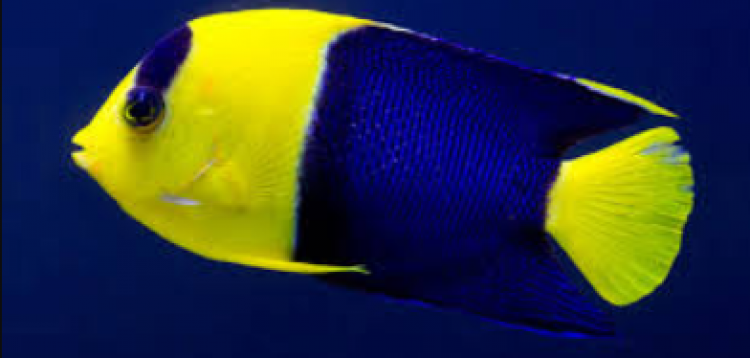- Name:
Fishers Angelfish
(View AKA's) - Family: Angelfish
- Species: Angel Dwarf
- Scientific Name: Centropyge fisheri


More Details
General info about Fishers Angelfish
A deep blue to orange-brown pygmy angelfish with an almost transparent whitish to pale yellow caudal fin, bright blue margins on the dorsal, anal fins and pelvic fins, and blue dashes along the rear edge of the dorsal and anal fins. They are usually found in areas with coral rubble in lagoon channels and over outer reef slopes, at a depth of 3 to 60 m.
Fishers Angelfish Diet & Nutrition
Fisher's Angelfish are omnivores. It can be fed with a varied diet of Spirulina, marine algae, mysid shrimp, and other meaty food such as brine shrimp and scallops.
Determining Sex of Fishers Angelfish
As with other fish in this genus, sex is not easily determined by coloration and can only be distinguished by its size. Due to their nature being protygenous hermaphrodite, larger individuals changes sex from female to male.
Breeding & Spawning Fishers Angelfish
Captive breeding for Fisher's Angelfish is difficult. However, in the wild, Centropyge species are known to court at dusk when the male soars above the female, hovers with his fins extended, and tilts at a 45-90 degree angle from the bottom. When the female is ready to spawn, it follows the male and initiates spawning with a mutual soaring display. The gametes are then released into the water column for external fertilization.
Common Diseases with Fishers Angelfish
Coral Beauty Angelfishes are susceptible to the common reef scourges such as parasites like White Spot Disease (Cryptocaryon irritans) or also known as Crypt, and Velvet Disease (Oodinium occelatum) which is a parasitic skin flagellate. It is also vulnerable to bacterial and fungal diseases as a secondary infection from the parasitic and protozoan diseases. One major bacteria of concern is the Vibrio bacteria. It usually starts as an infection that turns into Dropsy, Popeye, Bleeding or Red Streaks on the skin. It is a very fast acting bacteria that can kill the fish within two days.
Fishers Angelfish Origin
It is a widely distributed species throughout the Indo-west and central Pacific, ranging from East Africa, throughout the Indo-Malayan region and tropical Pacific to the Hawaiian Island and Johnson Atoll, and the Tuamotu Archipelago. It is one of the many dwarf angelfish endemic to the Hawaiian Island.
Caution with Fishers Angelfish
Fisher's Angelfish are not good reef tank dwellers as they may nip on stony and soft corals, and clam mantles if placed in a smaller tank. It is recommended that they are housed in a 55 gallon tank, at the minimum. They are intolerant of their own species or fish with the same size and colored, thus when adding 2 or more angels in a tank, it is recommended that they vary in size and color. Tankmates that are suitable for most of these angels would be community fish like tangs, clownfish, damsels, gobies, blennies, and butterflies. It is harmless towards non-sessile invertebrates like crabs and shrimps.
Acclimating Fishers Angelfish
Fisher's angelfish should be introduced in well established aquariums utilizing live rock filtration or decoration. These caves and other hiding places provide a sense of protection and territory for these angels, which is a key for their successful acclimation in tanks.
Relevent Articles
Original Detail
| Name | Species | Family | Scientific Name | More Detail | Added by |
|---|---|---|---|---|---|
| Fishers Angelfish | Angel Dwarf | Angelfish | Centropyge fisheri | A deep blue to orange-brown pygmy angelfish with an almost transparent whitish to pale yellow caudal fin, bright blue margins on the dorsal, anal fins and pelvic fins, and blue dashes along the rear edge of the dorsal and anal fins. They are usually found in areas with coral rubble in lagoon channels and over outer reef slopes, at a depth of 3 to 60 m. | PalaciosAn |
Changed by users
| Submitted Date | Submitted By | Status | Action |
|---|




